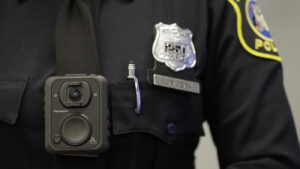Tampa police take steps toward transparency

Tampa will be receiving $1.2 million from the U.S. Department of Justice in order to expand the city’s program to outfit police officers with body cameras. This grant from the Bureau of Justice Assistance adds to the $600,000 already approved for the program by the Tampa City Council.
Increasing the amount of body cameras is an important step toward police transparency, which is necessary to make sure the community has trust in their police force. However, the cameras will only be effective if they are actually implemented in a way that makes the police force accountable to the public
The Tampa Police Department is set to begin the process of outfitting 600 police officers with body-worn cameras this month.
When asked about when the cameras will record, Deputy Chief Lee Bercaw said, “Not all of the time, but the majority of the time, most of the encounters that we’re in.”
Bercaw went on to explain the inclusion of bluetooth technology in the cameras. “For example, if I were to pull out my taser, that would automatically have [the body-worn-camera] go off,” Bercaw said.
This decision comes after a decades-long push to implement these kinds of technologies nationwide. For many years, body cameras were described as a solution to problems with police transparency. In 2015, a poll from the Cato Institute found that 92 percent of Americans supported these efforts to implement body cameras.
An analysis from George Mason University included 70 different studies around the world related to body-worn cameras found that citizen complaints about police officers went down after body-worn camera programs were implemented. One study in the analysis cited a 93% reduction in police complaints.
However, the implementation of body-worn cameras did not necessarily increase police transparency. Co-author of the analysis Cynthia Lum explains that “the culture and other aspects of the agencies will really determine how it is used.”
One possible explanation of how body-worn cameras have not increased trust in the public may be because some cities do not allow citizens to access the body camera footage. An investigation from the Associated Press said they filed 20 open records requests at various police departments across the country and not one resulted in the release of any video.
Tampa Mayor Jane Castor invoked public records requests when discussing the cost of the program. “You have to look at public records requests,” Castor said. “Those increase dramatically because people want to see that video as well.”
This comment implies that the police force and the city will make an effort to honor the public’s ability to access some of the body-camera footage when requested.
While the Tampa Police Department made an important step this month, it is up to them to continue to maintain a culture of transparency by allowing access to footage at times of controversy in order to further promote citizen trust in the police department.
Jared Sellick is a junior majoring in political science.








